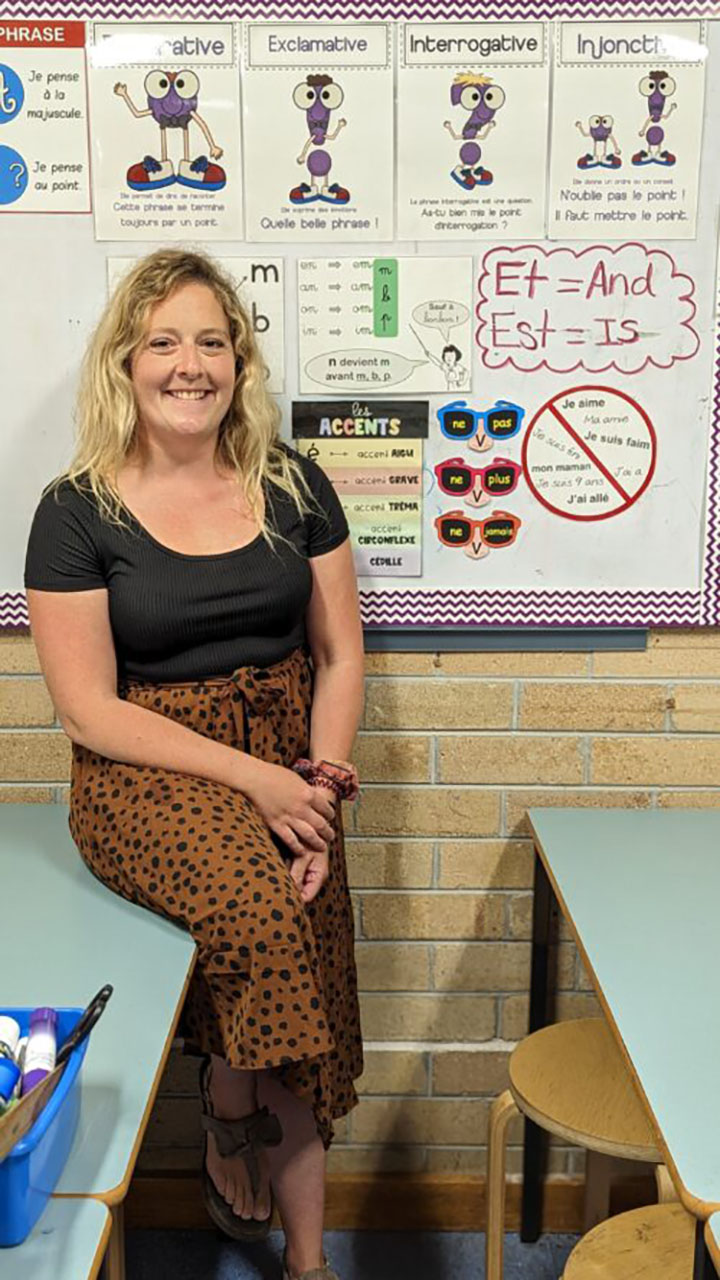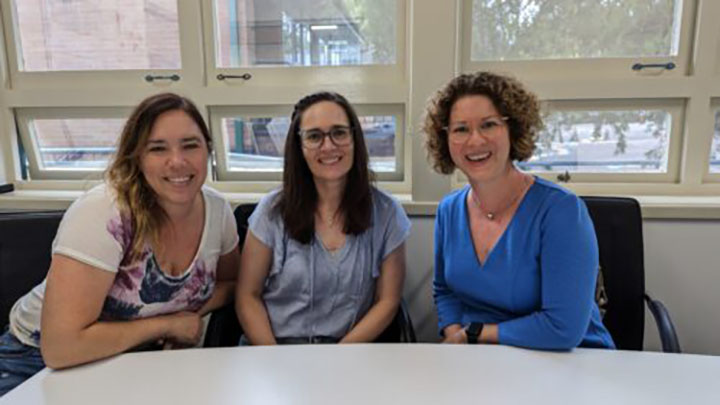“Yes” to bilingual education in Australia
As part of Francophonie Month, Canada in Australia had the opportunity to spend an afternoon at Killarney Heights Public School (KHPS), an elementary school located in the greater Sydney area.
KHPS is a vibrant school offering bilingual education to primary students through the various programs offered by FANS (French-speaking Association of the North Shore). A representative of Canada in Australia met with a Grade 4 Canadian teacher and three Canadian parents of students attending the school.
In Madame Gagné-Melançon’s classroom

Miss Sophie-Andrée Gagné-Melançon has taught in many places around the world. Originally from Morin-Heights to Paris, via Bristol, she is now based in Sydney, Australia, and has been teaching Grade 4 at KHPS since 2019. Sophie-Andrée has a vibrant and welcoming classroom. Teaching French in Australia is stimulating, but also comes with challenges. To keep her students motivated, she uses a variety of strategies.
“We try to find activities that the students enjoy. Since we work in small groups, we can offer more help and build a positive relationship with them. We plan different friendly competitions: poetry, illustration of a Francophone expression, spelling bee, etc. We also organize special activities for Francophonie week. For students in “French as a Foreign Language”, we often use play-based learning and put on plays.”
At KHPS, two teachers work in the same classroom. One English teacher in each class and one French teacher is responsible for two classes of the same grade. Various program options are available to students attending the school.
Anglophone program: This is more of an “French as a Foreign Language” program. Students in this program don’t speak French to begin with. Throughout their primary years, they will learn this new language through games, small reading and math groups, and so on. They also follow the CLIL (Content and Language Integrated Learning) program. This allows them to do science, history and geography in French for half the year.
Francophone program: Students already have knowledge and understanding of the French language. Often, at least one parent speaks French at home. Pupils work in French regularly throughout the week. In addition to reading and math groups, they also take sports, science, history and geography classes in French. They also have extra grammar classes to improve their knowledge.
It’s important to note that learning and teaching are based on the Australian curriculum.
“We follow the Australian curriculum and use the same assessment criteria. If, for example, we are working on descriptive text, each of us (English-speaking teacher and French-speaking teacher) will build the exact same program, one in French and one in English.”
All in all, culture plays an important role in Sophie-Andrée’s class.
“I love it! Almost every year, some students in my class come from Canada. I create bonds with these students. For example, when we’re learning new vocabulary, I’ll compare the word used in France with the one used in Canada. The students in the French program have a whole section about Quebec. For example, they learn about traditional dishes like poutine. We learn about Canadian monuments, languages and culture in general. Their end-of-year gift was a maple taffy lollipop!
We also learn about different countries. At the moment we are working on Morocco, but we are visiting several other countries. We’re celebrating all French-speaking cultures!
As a final word, we discussed bilingualism and its benefits.
“Teaching in four different countries was a dream. Many of my friends who are also teachers have not had the chance to fulfill that dream, because they are not bilingual. It’s quite an opportunity!”
One school, two languages and a close-knit community

Not only does KHPS bring a bilingual education to children, but also a sense of community. We had the opportunity to speak with three mothers from three different Canadian families who attend the school: Jody, who grew up in Ontario and who has two children at KHPS; Lise, who has four children and is from a small town in Alberta; and finally, Jessica, who is also from Ontario and has two children at KHPS. For various reasons, these families have all ended up in Sydney, Australia.
Together, we discussed why they chose to enroll their children in a bilingual school.
“It’s part of our culture, it’s important to me. I grew up with French all around me. Learning a second language is important for children,” said Jody.
“We’re incredibly lucky to have an environment where we can learn French,” added Lise.
Jessica added: “I did some research to find a bilingual school in Sydney, we wanted our children to speak French and English. We also wanted to follow the Australian school calendar. Thanks to bilingual learning, our children are very strong in reading, in both languages, there isn’t necessarily one language that is dominant.”
Every year, many Canadian families make the decision to settle in a foreign country, including Australia. But how do you keep Canadian and French culture alive on the other side of the world?
Lise begins by saying: “We have a large Canadian community. We often get together to celebrate holidays like Canada Day, St-Jean-Baptiste Day, etc.”
“Celebrations like Halloween, in my case, are part of our childhood! Also, my son plays field hockey. You have to balance the two cultures. My kids use the word ‘thongs’ instead of ‘flip flops’, but they put maple syrup on their pancakes!” adds Jody.
“We see everyone trying to integrate their culture and language, so we feel less alone. It’s a challenge every day to speak French with the kids,” adds Jessica.
To overcome this challenge, these moms have several tricks up their sleeves. They use picture books from Canada, movies in French, dictionaries with pictures, and even bilingual wrappers that come directly from Canada.
Thanks to their bilingualism, Jody, Lise and Jessica have had many opportunities from Canada to Australia: various jobs all over the world, stronger bonds and connections with French/English-speaking colleagues.
“Speaking several languages has given me the opportunity to understand and appreciate other cultures,” says Jody.
Finally, would these families recommend KHPS? The answer was unanimous: “Yes, yes, yes!”
“Come to Killarney! It’s like family here because we all like the same things. There are also lots of activities for Francophonie week,” said Lise.
“It meets our expectations in terms of bilingual education, but also in terms of community. At KHPS, everyone works hard for their children, but also for other people’s children. We help each other keep our culture and language together,” adds Jessica. She then adds as a final word: “At KHPS, they want the best for the children as a whole. It’s not a school that’s just academically bilingual, but one that takes care of its families and wants to include everyone. It’s a welcoming environment and you feel good here!”
- Date modified: